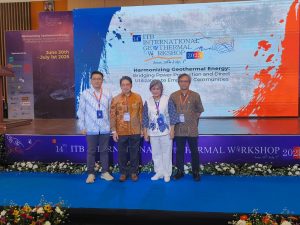Jakarta – In order to accelerate the conversion of energy from fossil energy to new and renewable energy (NRE), the government can shift fuel subsidies to electricity. The main problem in energy conversion today is that the costs charged to the community are more expensive when using NRE, academics said Monday (21/6).
Dr. Ir Bambang Priyono MT from the Faculty of Engineering University of Indonesia presented his case study on the transition of oil-fueled motorbikes to electric-fueled motorbikes at the international conference entitled “Boosting Indonesia’s Role in G20 Presidency 2022” held by the University of Indonesia (UI) at the JW Marriott Hotel Jakarta and broadcast live via Zoom and Youtube channels.
According to him, the form of subsidies that will be given later can be in the form of infrastructure needed for electric motors, such as batteries and spare parts. In addition, subsidies are also carried out by financing the procurement of a mass swap battery system to make it easier to refuel electric motors.
Priyono said, a gradual process is needed to change people’s habits from using fossil energy. This process begins with accustoming people to reduce the use of fossil energy that produces carbon dioxide. Furthermore, the remaining carbon dioxide will be converted into energy through carbon capture and utilization (CCU) technology, as initiated by the Munawar Khalil team from the UI Faculty of Mathematics and Natural Sciences (FMIPA).
The use of CCU technology is at the same time a transition to the use of new and renewable energy because it utilizes the surrounding air which contains carbon dioxide.

Modification of PLTU operation is an option before permanent shutdown
The electricity supply from coal-fired Steam Power Plants (PLTU) has hampered the integration of renewable energy generation in the past decade. The reason is, 70% of electricity generation in Indonesia still comes from PLTU, and most of these PLTU units are under 10 years old.
“The growth in electricity demand is not as big as projected, thus causing more electricity supply. This condition closes the opportunity for massive integration of renewable energy generation in this decade, along with the transition of the electricity system towards net-zero emission,” said Fabby Tumiwa, Executive Director of IESR in the webinar ‘Launching Study and Discussion: Analysis of Flexible Operational Power Plants in the Framework of Energy Integration. Renewable’, Wednesday (15/6).
Furthermore, IESR analyzes that as a temporary measure it is necessary to retrofit the coal power plant so that it can be operated flexibly. This will shift the role of the PLTU, which originally functioned purely as a baseload generator, to be able to adjust the output of the generator according to the intermittent renewable energy, thereby helping the stability of the electricity network. This option can be implemented before the PLTU is permanently discontinued.
“This means that flexible power plants will be discontinued after the supply of renewable energy can meet demand and the interruption can be overcome with other options, such as interconnection of the electricity grid, management of electricity demand through market mechanisms, and alternative energy storage such as batteries, hydrogen-powered gas turbines,” he explained.
According to the IESR study, in order for Indonesia’s electricity system to be in line with the Paris Agreement targets, by 2030 around 47% of electrical energy in Indonesia must come from renewable energy plants. The challenge is that the over capacity of PLN’s power plants which reaches 5 Giga Watt (GW) makes the renewable energy mix in the system unable to be increased without reducing the capacity of the PLTU through early retirement, or lowering the capacity factor of the PLTU by carrying out flexible operating modes.
The government and PLN’s plans to retire 5 GW of PLTU and replace 3.7 GW with renewable energy generators give little hope. This step needs to be complemented by a more flexible PLTU operation to increase the utilization of renewable energy. (Hartatik)














